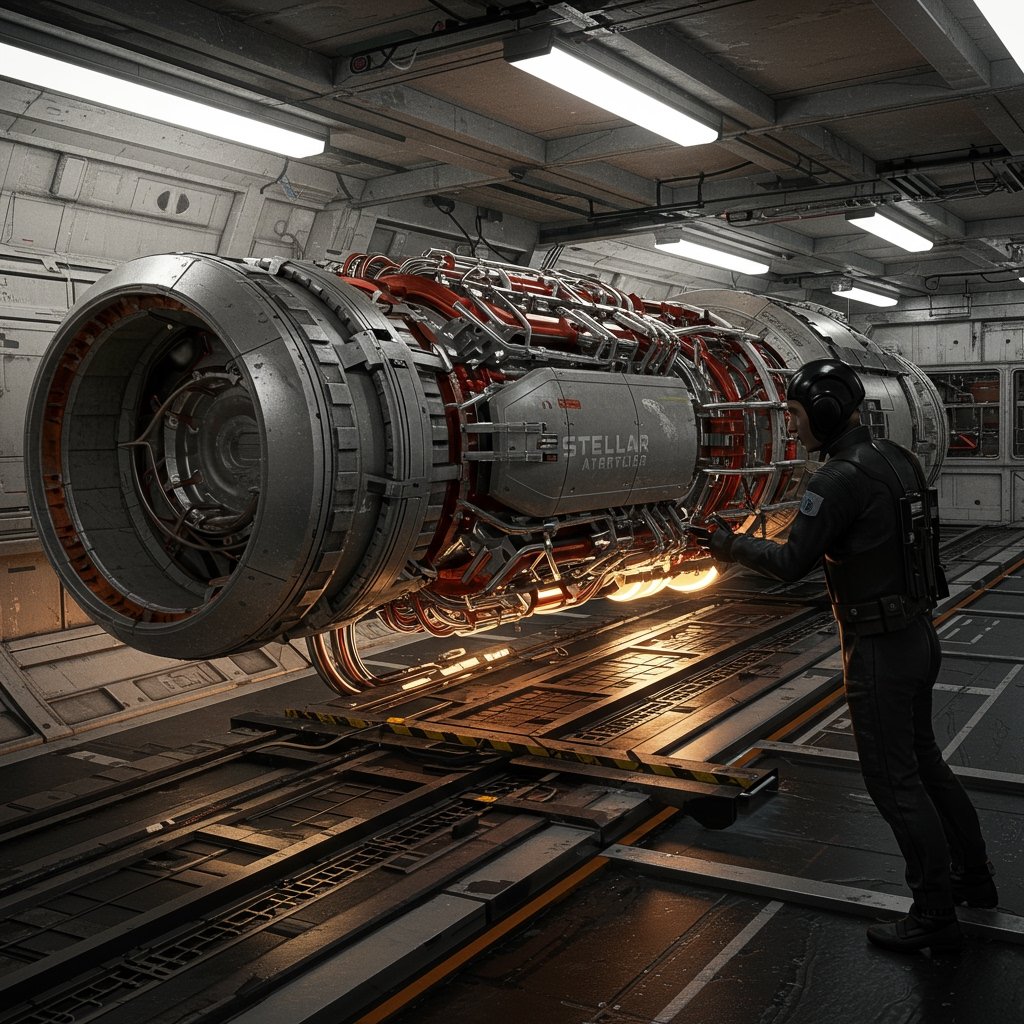Stellar Dynamics Reveals ‘Fusion Pulse’ Engine Breakthrough at Exclusive Summit
SAN JOSE, CA – Stellar Dynamics, a leading innovator in space technology, today announced a significant technological advancement with the unveiling of its highly anticipated ‘Fusion Pulse’ engine. The reveal took place during a private investor summit held exclusively for stakeholders and potential partners in San Jose, California. The company asserts that this groundbreaking propulsion system represents a major leap forward, promising substantially reduced interplanetary transit times and improved mission capabilities across the solar system.
Company officials present at the summit detailed the core specifications and claimed performance metrics of the new engine. They stated that the ‘Fusion Pulse’ engine offers a claimed 50% increase in efficiency and thrust compared to current state-of-the-art propulsion technologies. This dramatic improvement in both fuel utilization (efficiency) and propulsive force (thrust) is expected to translate directly into shorter travel durations for spacecraft, enabling more ambitious missions and potentially opening up new economic possibilities in space.
A Leap in Space Propulsion Technology
The conventional wisdom in space travel dictates a trade-off between speed and fuel consumption. Achieving higher speeds typically requires expending large amounts of propellant, which increases mass and complexity. The ‘Fusion Pulse’ engine, as described by Stellar Dynamics, seeks to fundamentally alter this equation. By leveraging principles of fusion technology – albeit in a pulsed, contained manner – the engine aims to generate significantly more thrust per unit of fuel mass compared to chemical rockets or even some advanced electric propulsion systems currently in use or development.
Stellar Dynamics has been working on this technology for several years, keeping development largely confidential until this strategic reveal. The decision to announce the engine at a private investor summit underscores the company’s focus on demonstrating tangible progress to its financial backers and attracting further investment necessary for the next phases of development and testing.
Path to the Stars: Testing and Regulatory Hurdles
Following the announcement, Stellar Dynamics also outlined its preliminary plans for testing the ‘Fusion Pulse’ engine. The firm detailed plans for an initial test flight slated for late 2026. This crucial maiden flight is planned to occur aboard its prototype vehicle, currently designated the ‘Odyssey‘. The ‘Odyssey’ vehicle is being designed specifically to accommodate and test the unique operational requirements of the ‘Fusion Pulse’ engine in a relevant space environment.
The path from ground testing to flight remains complex and subject to numerous factors. Company representatives emphasized that the late 2026 test flight timeline is contingent upon successfully clearing necessary regulatory clearances. Space launches and advanced propulsion systems are subject to stringent national and international regulations concerning safety, environmental impact, and spectrum usage, among others. Securing these approvals will be a critical step in realizing the flight test objective.
The development cycle for advanced space propulsion is typically lengthy and capital-intensive. The unveiling of the ‘Fusion Pulse’ engine at this stage, combined with a concrete (albeit preliminary) flight test schedule, signals that Stellar Dynamics believes it has achieved significant milestones in bringing the technology closer to operational reality.
Market Reaction and Future Outlook
The news of the ‘Fusion Pulse’ engine reveal resonated strongly with investors attending the summit and the broader market. Almost immediately following the announcement, Stellar Dynamics shares experienced a significant surge. The firm’s stock was reported as climbing by over 12% in midday trading, reflecting considerable investor optimism about the potential impact of this technology on the company’s future prospects and the space industry as a whole.
The claimed improvements in efficiency and thrust could have profound implications for future space missions. Reduced transit times could make missions to Mars, the outer planets, and beyond more feasible and less costly in terms of life support and mission duration. It could also accelerate the development of commercial activities in space, such as asteroid mining, in-space manufacturing, and rapid satellite deployment or servicing. The ability to move larger payloads faster and more efficiently is a key enabler for the growth of the space economy.
While the initial announcement focuses on the engine’s potential, significant challenges remain, including further ground testing, scaling the technology, securing regulatory approval, and the successful execution of the planned flight test in late 2026. The coming years will be critical in determining whether the ‘Fusion Pulse’ engine lives up to its ambitious claims and truly ignites a new era of faster, more efficient interplanetary travel.





